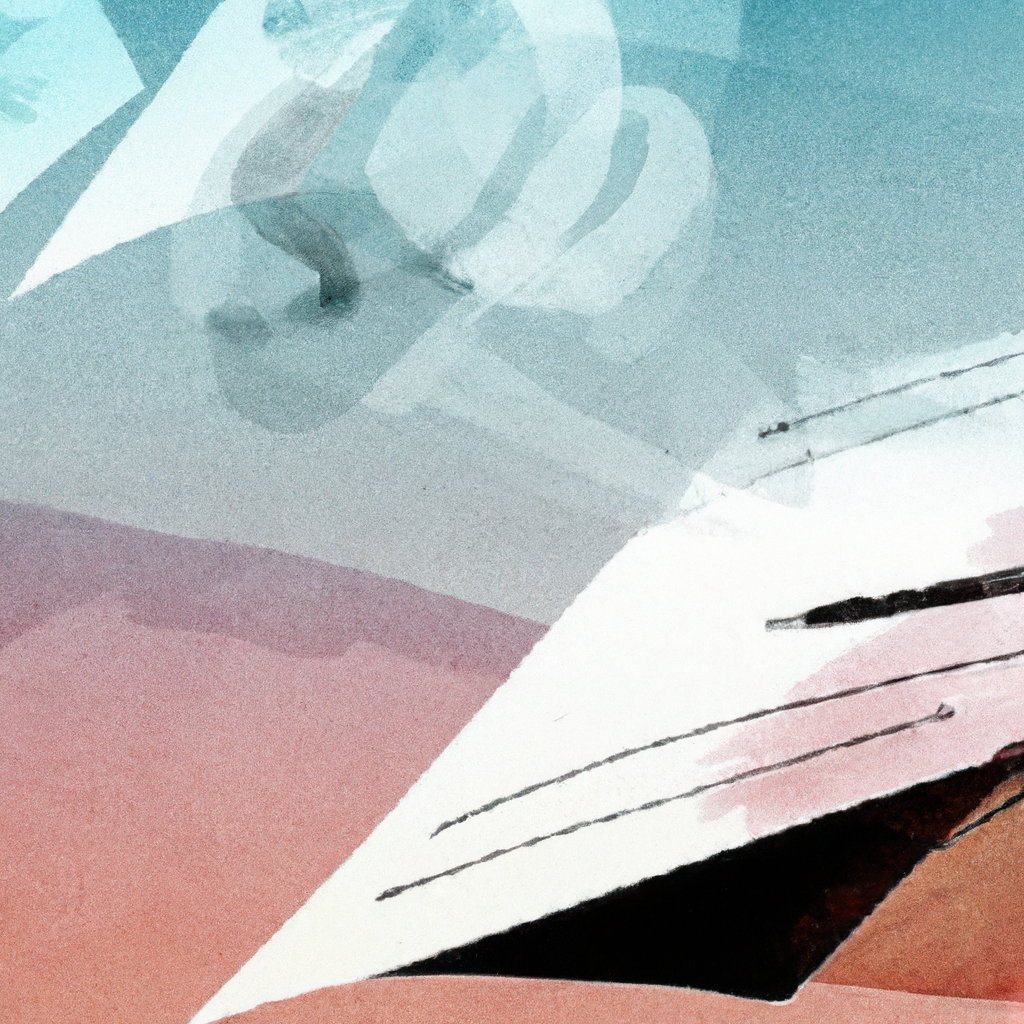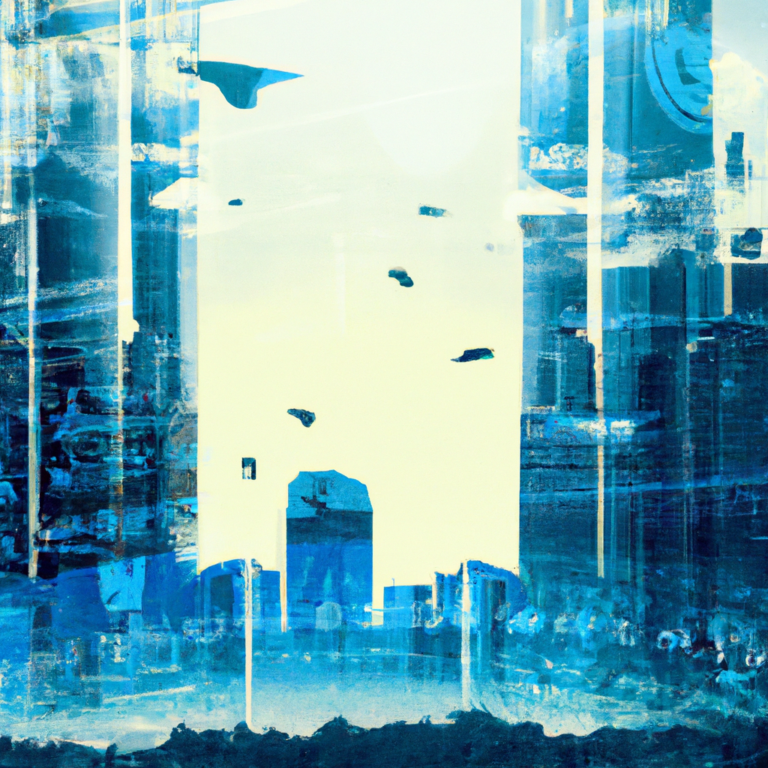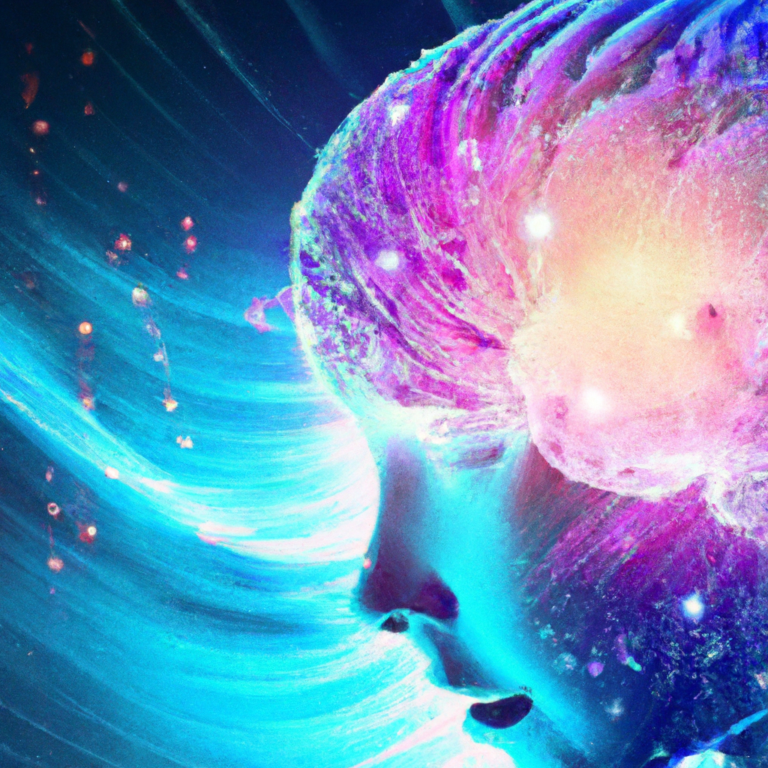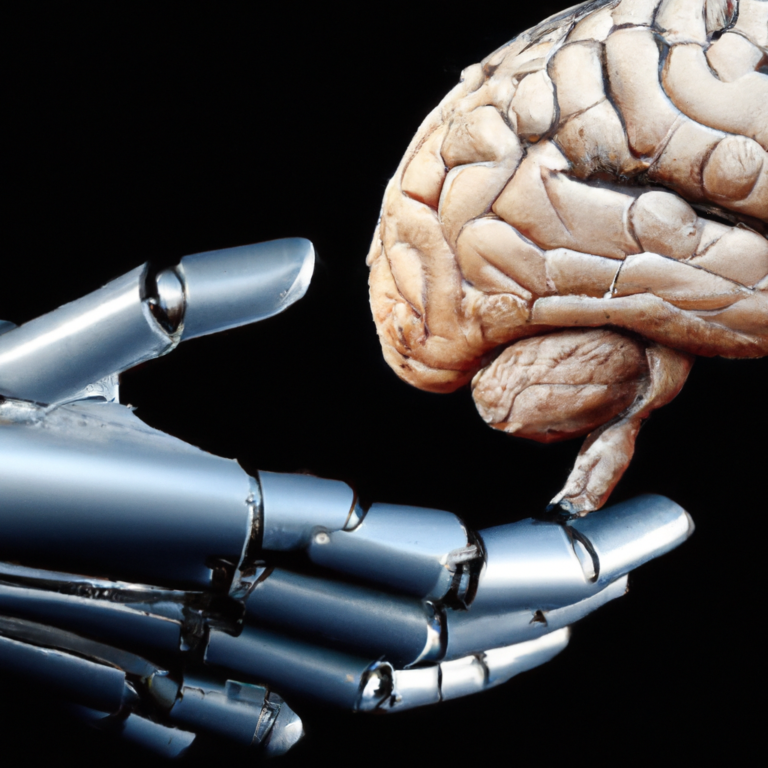The Potential Of AI To Create New Forms Of Art And Creativity: How Can AI Help Us Create New And Innovative Art, Music, And Literature?

Imagine a world where artificial intelligence (AI) is not only revolutionizing industries but also transforming the creative landscape. This captivating article explores the potential of AI to create new forms of art, music, and literature, igniting the spark of innovation. Discover how AI can help unleash the boundless depths of human creativity by collaborating with technology, and delve into the exciting possibilities that lie ahead. Prepare to be inspired as we delve into the realm where AI and art converge, opening doors to uncharted territories of artistic expression.

Artificial Intelligence and Art
Introduction to AI in art
Artificial intelligence, often referred to as AI, has revolutionized numerous industries, and the world of art is no exception. AI technologies have found their way into art creation and have opened up new possibilities for artists, musicians, and writers. This integration of AI and art has sparked excitement and sparked debates about the role of technology in the creative process. In this article, we will explore the benefits, limitations, and future prospects of AI-driven creativity in art, music, and literature.
Benefits of using AI in art creation
The implementation of AI in art creation has brought about numerous benefits. One of the most significant advantages is the ability of AI to generate original artworks, compositions, and stories. AI algorithms can analyze vast amounts of data, identify patterns, and create unique outputs that human artists may not have imagined. This not only expands the possibilities of art but also presents artists with novel ideas and inspiration, pushing the boundaries of human creativity.
Furthermore, AI technology can act as a powerful tool for enhancing the artistic process. Artists can use AI-powered tools for image generation, music composition, and creative writing, among other applications. These tools can assist artists in overcoming creative blocks and exploring new styles and aesthetics. In addition, AI can streamline and automate certain aspects of the creative process, allowing artists to focus their energy on conceptualization and expression.
AI-generated art in the contemporary world
In the contemporary world, AI-generated art has gained significant attention and recognition. AI algorithms are capable of producing visually stunning images that blur the lines between human and machine creativity. Artists and curators are increasingly incorporating AI-generated art into exhibitions, galleries, and museums. This integration not only challenges traditional notions of authorship but also prompts discussions about the impact of AI on the art world.
AI-generated music is also making waves in the contemporary music scene. From composing melodies to generating complex harmonies, AI algorithms can assist musicians in creating captivating and unique compositions. Furthermore, AI technology has facilitated collaboration between AI systems and human musicians. This collaborative approach allows for the creation of music that combines the best of both human and AI capabilities, resulting in groundbreaking and innovative sonic experiences.
Similarly, AI has made its mark in literature with AI-generated storytelling. By analyzing vast databases of literature and textual data, AI algorithms can generate narratives, plotlines, and even entire novels. While AI-generated stories may not possess the same depth of understanding as human-written ones, they have the potential to surprise and engage readers with unexpected twists and turns. Moreover, AI can serve as a valuable tool for authors and writers, assisting in the generation of ideas, character development, and language refinement.
AI and Visual Arts
AI-powered image generation
AI-powered image generation has transformed the field of visual arts. Through the use of generative adversarial networks (GANs) and other AI algorithms, artists can create visually stunning and thought-provoking artworks. AI algorithms can analyze large datasets of images, learn the underlying patterns, and generate new images based on this learned knowledge. This ability not only speeds up the creative process but also opens up new avenues for artistic expression and experimentation.
With AI-powered image generation, artists can explore unique and unconventional styles, merging different artistic traditions, or creating entirely new ones. AI algorithms can be trained to mimic the styles of famous artists, such as Van Gogh or Picasso, providing artists with a digital canvas to experiment and create in the footsteps of the masters. This fusion of AI technology with human creativity results in visually captivating artworks that push the boundaries of traditional artistic techniques.
Creating visual art with AI assistance
In addition to AI-powered image generation, AI can also serve as a valuable assistant to visual artists. AI algorithms can analyze images, recognize objects, and suggest compositional improvements or alternative perspectives. This AI assistance allows artists to enhance their works, refine their ideas, and overcome artistic challenges.
Furthermore, AI technology can be used to automate certain repetitive tasks in the visual arts, such as color correction, image restoration, or even 3D modeling. By delegating these tasks to AI systems, artists can save time and focus on their creative vision. AI assistance in the visual arts is not about replacing human artists but about augmenting their abilities and offering them new tools to express their artistic voice.
Exploring new styles and aesthetics with AI
One of the most exciting aspects of AI in art is its ability to explore new styles and aesthetics. AI algorithms can learn from a vast range of artistic and cultural references, exposing artists to a multitude of influences. This exposure to diverse styles can inspire artists to experiment with their own works and adopt new perspectives.
Additionally, AI can be used to combine different artistic styles, merging traditionally incompatible genres or techniques. This interdisciplinary approach can lead to the creation of hybrid art forms and the development of entirely new visual languages. Exploring new styles and aesthetics with the assistance of AI offers artists the opportunity to break away from conventional norms and create truly unique and innovative works.
AI and Music
AI-generated music composition
AI-generated music composition has revolutionized the way musicians approach the creative process. AI algorithms can analyze millions of musical compositions, identify patterns, and generate original melodies and harmonies. This ability to generate music has the potential to inspire musicians with fresh ideas and compositions they may not have discovered on their own.
Furthermore, AI-generated music can be tailored to specific genres, moods, or even individual preferences. AI algorithms can learn from large music databases and generate compositions that align with certain musical styles or evoke desired emotional responses. This personalized approach to music composition provides musicians with a powerful tool for realizing their artistic vision and engaging their audience on a deeper level.
Enhancing music production with AI
Aside from music composition, AI technology has found its place in enhancing the production process of music. AI algorithms can analyze audio signals, separate different sound sources, and improve the quality of recordings. This capability allows musicians to achieve professional-quality recordings without the need for extensive post-production or costly equipment.
AI can also assist in music mixing and mastering. By analyzing the characteristics of well-mixed and mastered tracks, AI algorithms can provide recommendations and automate certain aspects of the process, resulting in polished and cohesive sound productions. This enhancement of the production process enables musicians to focus on their creativity and expression, knowing that AI technology is helping them achieve their desired sonic outcomes.
Collaboration between AI and human musicians
Collaboration between AI systems and human musicians has emerged as a new frontier in the world of music. Instead of viewing AI as a replacement for human creativity, musicians are embracing AI as a creative partner. By leveraging the strengths of AI, such as generating complex musical patterns or exploring unconventional harmonies, musicians can fuse their artistic sensibilities with the computational power of AI.
This collaborative approach has resulted in groundbreaking music that pushes the boundaries of traditional musical genres. AI systems can introduce unexpected elements, challenge established conventions, and inspire human musicians to think outside the box. The interplay between AI and human musicians stimulates creativity, facilitating the creation of music that transcends traditional notions and forms.
AI and Literature
AI-generated storytelling
AI-generated storytelling has opened up new possibilities in the world of literature. AI algorithms can analyze vast quantities of text, explore narrative structures, and generate stories that adhere to specific genres or themes. While these AI-generated stories may lack the depth of human narratives, they can surprise readers with unexpected plot twists and unconventional storylines.
AI-generated storytelling can also serve as a valuable tool for authors and writers. AI algorithms can assist in idea generation, helping writers overcome writer’s block or explore new narrative directions. Additionally, AI technology can aid in language refinement and sentence structuring, improving the overall quality of written works.
AI as a tool for authors and writers
AI technology has paved the way for writers to leverage its capabilities as a creative tool. By incorporating AI language models into their writing process, authors can enhance their ideas, refine their prose, and experiment with different writing styles. AI algorithms can provide writers with suggestions, alternatives, and even assist in generating new story concepts.
Furthermore, AI can aid in the research process, analyzing vast amounts of textual data and providing writers with valuable insights and information. This research support allows writers to delve deeper into their chosen topics, weaving intricate narratives that are grounded in knowledge and authenticity.
Creative writing supported by AI
Creative writing is an area where AI technology can be particularly impactful. AI algorithms can learn from extensive literary databases and generate poems, short stories, or even novel chapters. While AI-generated creative writing may not possess the same depth of understanding or emotional resonance as human-written works, it can serve as a source of inspiration and spark new ideas for human writers.
Additionally, AI can provide writers with a fresh perspective on their own works. By analyzing the sentiment, style, or characters present in a writer’s previous works, AI algorithms can offer insights and recommendations that inspire the writer to explore new creative territories. AI-supported creative writing is not about replacing human writers but about augmenting their abilities and helping them reach new levels of innovation.
Blending AI and Human Creativity
The role of human input in AI-generated art
While AI-generated art, music, and literature have immense potential, it is crucial to appreciate the role of human input in the creative process. AI algorithms are trained on large datasets and learn from existing patterns and trends. However, it is human artists who provide the initial seed, the conceptual framework, and the artistic intentions that guide the AI-generated outputs.
Human artists bring their subjective experiences, emotions, and unique perspectives to the table. This human input imbues AI-generated art with meaning, depth, and a connection to the human condition. The fusion of AI and human creativity allows for the creation of works that are both innovative and deeply rooted in the human experience.
Collaborative projects between AI and human artists
Collaborative projects between AI and human artists are becoming increasingly common and fruitful. Artists are leveraging the computational capabilities of AI algorithms to expand their creative horizons, experiment with new techniques, and push the boundaries of their artistic practices. AI is not seen as a replacement for human artists but as a complementary force that enhances their abilities and offers them new tools.
These collaborations often result in works that seamlessly blend human and AI creativity. In these projects, AI algorithms act as creative partners, providing artists with fresh perspectives, alternative ideas, or even surprising inputs. The interplay between AI and human artists fosters a mutually beneficial creative environment, leading to the production of art that is both innovative and imbued with human emotion.
Ethical considerations in AI-assisted creativity
As AI becomes increasingly integrated into the creative process, ethical considerations arise. One of the primary concerns is the potential for the displacement of human artists. While AI technology can automate certain aspects of the creative process, it is essential to recognize that human creativity and subjective experiences are irreplaceable. The collaborative coexistence of AI and human artists should be prioritized to ensure the continued appreciation and recognition of human artistic contributions.
Another ethical consideration is the ownership and authorship of AI-generated artworks, compositions, or stories. The question of who owns the rights to AI-generated creations is still a subject of debate and legal frameworks are continuously evolving to address these concerns. Striking a balance between the creative contributions of AI and human artists is crucial to ensure fair recognition and compensation for both parties involved.
Challenges and Limitations of AI in Creativity
Lack of human-like intuition and emotions
One of the fundamental limitations of AI in creativity is its lack of human-like intuition and emotions. AI algorithms can analyze data, identify patterns, and generate outputs, but they cannot replicate the complex emotional nuances that human artists bring to their works. The emotional connection between the artist and the audience is an integral aspect of art, and AI’s current capabilities fall short in this domain.
Furthermore, AI lacks a deep understanding of human experiences, culture, and the intricacies of artistic expression. While AI algorithms can learn from existing artworks, they may struggle to create truly original and meaningful works that resonate with human audiences. The development of AI systems that can emulate human intuition and emotions remains an ongoing challenge in the field of AI-driven creativity.
Dependency on existing data and patterns
Another challenge that AI faces in creativity is its dependency on existing data and patterns. AI algorithms can only generate outputs based on the information they have been exposed to during training. This reliance on existing data can limit the novelty and originality of AI-generated works, as they may reproduce existing artistic styles or ideas rather than pushing the boundaries of creativity.
Additionally, AI algorithms can perpetuate biases present in the training data. If the training data predominantly represents one cultural or artistic perspective, the AI-generated outputs may be limited to that particular viewpoint. Addressing these biases and ensuring a diverse and inclusive training data set is essential to encourage the development of AI systems that can explore new artistic territories and promote cultural diversity.
The fear of AI replacing human creatives
A common fear surrounding AI in creativity is the notion that AI will eventually replace human artists, musicians, and writers. However, it is essential to recognize that AI is a tool, and a tool is only as powerful as the human who wields it. AI technology is best viewed as a creative collaborator, augmenting human artistic abilities, rather than a replacement.
AI-driven creativity should be seen as an opportunity for artists, musicians, and writers to explore new horizons, challenge conventions, and innovate. The coexistence of AI and human creativity brings forth collaborative possibilities that can result in art, music, and literature that transcend the limitations of either creative force alone.
AI in Audience Engagement and Curation
AI-based personalized recommendations
AI technology has transformed the way audiences engage with art, music, and literature. AI algorithms can analyze user preferences, behavior, and historical data to provide personalized recommendations tailored to individual tastes. By understanding the unique preferences of each user, AI systems can curate a personalized selection of artworks, songs, or books that align with their interests and preferences.
This AI-based personalized recommendation system not only enhances the user experience but also helps users discover new artists, genres, or literary works they may not have come across otherwise. By bridging the gap between audiences and creative works, AI technology fosters a more inclusive and diverse artistic landscape.
Enhancing user experience with AI
AI technology has the potential to enhance the user experience in various ways. AI-powered chatbots or virtual assistants can provide information, answer questions, and guide users through art exhibitions, music festivals, or literary events. These AI assistants can offer personalized insights, historical context, or even engage in conversational interactions, adding an extra layer of engagement and immersion for the audience.
Furthermore, AI can facilitate real-time feedback mechanisms for artists, musicians, and writers. AI algorithms can analyze audience reactions, sentiment, and engagement levels, providing valuable insights into how their creative works are received. This feedback loop promotes a dynamic and iterative approach to the creative process, allowing artists to refine their works based on audience feedback.
AI in curating and preserving art, music, and literature
AI technology has also found its place in curating and preserving art, music, and literature. AI algorithms can analyze vast collections of creative works, identify thematic connections, and curate exhibitions, playlists, or reading lists that showcase the breadth and depth of human creativity. This AI-powered curation contributes to the discovery and preservation of artistic heritage, ensuring that diverse artistic expressions are accessible to audiences around the world.
Additionally, AI can aid in the preservation of cultural artifacts. AI algorithms can analyze and restore old photographs, manuscripts, or recordings, ensuring that these valuable pieces of cultural history are preserved for future generations. The integration of AI in curating and preserving art, music, and literature not only facilitates access to creative works but also contributes to the preservation and celebration of cultural heritage.
Exploring New Frontiers: AI and Mixed Media
AI in virtual and augmented reality art
AI technology has found exciting applications in virtual and augmented reality (VR/AR) art. AI algorithms can analyze 3D models, textures, and lighting conditions, enhancing the realism and immersion of VR/AR environments. These AI-powered enhancements create visually stunning and interactive experiences, blurring the line between the digital and physical worlds.
AI can also serve as a creative collaborator in VR/AR art. By analyzing user interactions, AI algorithms can adapt the VR/AR experience in real-time, responding to user preferences and actions. This dynamic interaction between AI and users fosters a more personalized and engaging artistic environment.
AI-powered interactive installations
Interactive installations have become increasingly popular, and AI technology plays a crucial role in their development. AI algorithms can analyze user inputs, gestures, or even facial expressions, allowing installations to respond and adapt based on user interactions. These AI-powered interactive installations create immersive and participatory experiences for audiences, transforming them from passive observers into active participants in the artistic creation process.
AI-driven interactive installations can incorporate various sensory inputs and outputs, including sound, visual effects, or even haptic feedback. This multi-sensory approach enhances audience engagement and creates memorable and impactful artistic experiences that challenge traditional notions of artistic mediums.
Incorporating AI in multimedia collaborations
AI technology has the potential to revolutionize multimedia collaborations. Artists, musicians, writers, and other creatives can incorporate AI algorithms into their collaborative processes, creating novel and boundary-pushing multimedia experiences. By merging different creative mediums and integrating AI technology, these collaborations result in works that transcend the limitations of any individual medium or artist.
For example, visual artists can synchronize their artworks with AI-generated music compositions to create immersive audio-visual experiences. Writers can collaborate with AI systems to explore new narrative structures and interactive storytelling. The possibilities for AI-driven multimedia collaborations are endless, pushing the boundaries of creativity and redefining the artistic landscape.

AI and Cultural Impact
Emergence of new art forms and genres
AI-driven creativity has contributed to the emergence of new art forms and genres that challenge traditional artistic categorizations. The fusion of AI technology with human creativity has given rise to hybrid forms of visual art, music, and literature that were previously unimaginable. These new art forms often defy categorization and push the boundaries of what is considered art.
For example, AI-generated visual art may incorporate elements of mixed reality, virtual reality, or augmented reality, blurring the line between physical and digital art. AI-generated music might combine elements from multiple genres, resulting in a unique and eclectic sonic experience. AI-generated literature may experiment with interactive storytelling, nonlinear narratives, or collaborative authorship. These new art forms and genres reflect the transformative power of AI in shaping cultural expressions.
Reimagining traditional cultural expressions
AI technology has also influenced the reimagining of traditional cultural expressions. AI algorithms can analyze and learn from diverse cultural artifacts, allowing artists, musicians, and writers to reinterpret and reinterpret traditional forms in innovative ways. The integration of AI in traditional cultural expressions facilitates their preservation, transformation, and adaptation to contemporary contexts.
For example, AI-powered image generation can replicate the artistic styles of different cultural traditions, enabling artists to explore and pay homage to these cultural expressions. AI-generated music can incorporate traditional melodies or instruments in novel compositions, bridging the gap between the old and the new. AI-supported translation and language models can enable writers to bring traditional stories and folklore to a wider audience, transcending linguistic and cultural barriers.
Social, ethical, and legal implications
The integration of AI in art, music, and literature raises various social, ethical, and legal implications. The widespread use of AI-generated artworks, music, and stories prompts conversations about the role of human creativity and the impact of technology on the human experience. Questions of authorship, ownership, and recognition arise as AI becomes more integrated into the creative process.
Furthermore, the biases present in AI algorithms can perpetuate existing societal biases and inequalities. If not carefully addressed, AI-generated works may reproduce stereotypes or exclude underrepresented voices from the artistic landscape. This highlights the importance of diverse and inclusive training data sets to ensure that AI-driven creativity reflects and celebrates the diversity of human experiences.
Legal frameworks are also evolving to address the challenges posed by AI in art, music, and literature. Intellectual property rights, copyright issues, and ownership of AI-generated works are still being debated and clarified. Balancing the creative contributions of AI and human artists is crucial to ensure fair recognition, compensation, and protection of creative endeavors.
The Future of AI-Driven Creativity
Advancements in AI technologies
The future of AI-driven creativity is bright, with advancements in AI technologies on the horizon. Machine learning algorithms are becoming increasingly sophisticated, enabling AI systems to learn from more diverse and complex datasets. Natural language processing and generation models are evolving, facilitating more nuanced and context-aware creative outputs.
Additionally, research in AI is exploring the development of algorithms that emulate human intuition, emotions, and creativity more closely. This advancement towards more human-like AI capabilities will contribute to the evolution of AI-driven creativity, bridging the gap between machine-generated and human-created works.
Pushing the boundaries of human creativity
AI-driven creativity has the potential to push the boundaries of human creativity. By challenging conventional norms, exploring new styles and aesthetics, and fostering interdisciplinary collaborations, AI can inspire artists, musicians, and writers to take risks and think outside the box. The fusion of AI and human creativity has the power to unlock new and unexplored artistic territories and redefine the creative landscape.
Collaborative coexistence: AI and human imagination
The future of AI-driven creativity lies in the collaborative coexistence of AI and human imagination. Rather than fearing AI as a threat to human creativity, embracing AI as a creative partner opens up new possibilities and avenues for artistic expression. AI can complement human artistic abilities, provide new perspectives and tools, and augment the creative process.
In this collaborative coexistence, AI and human artists work together, merging their strengths and creative sensibilities to create works that transcend the limitations of either creative force alone. The future of AI-driven creativity lies in the mutual inspiration, innovation, and breakthroughs that arise from the interplay between AI and human imagination. Together, AI and human artists can forge new paths, redefine artistic boundaries, and shape the future of art, music, and literature.
Want to write articles like us? Get your copy of AI WiseMind here!





